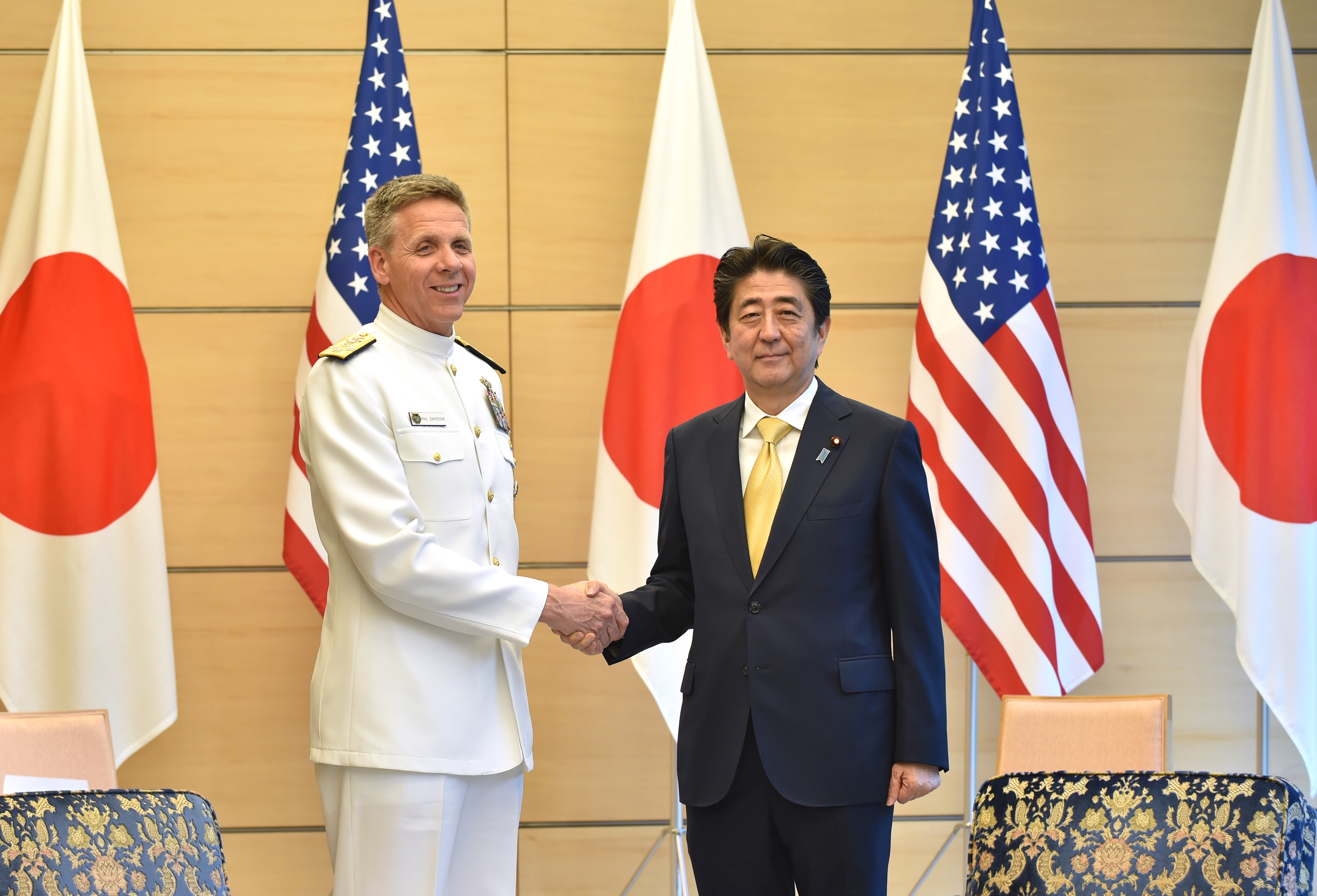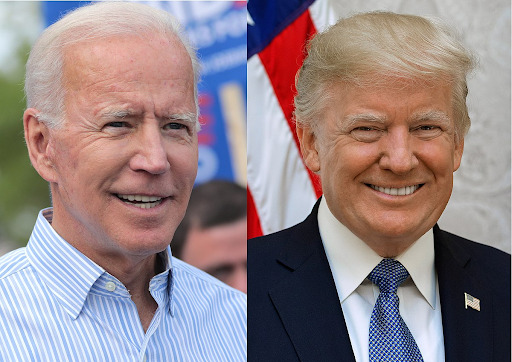
Admiral Philip S. Davidson (L), Commander of US Indo-Pacific Command shakes hands with Japan's Prime Minister Shinzo Abe at the Abe's office in Tokyo on June 21, 2018. (Photo by Kazuhiro NOGI and KAZUHIRO NOGI / POOL / AFP)
Sayuri Romei
Japanese Prime Minister Shinzo Abe first revealed the Free and Open Indo-Pacific (FOIP) policy during his keynote address at the International Conference on African Development in Nairobi in August 2016. Although the concept was first mentioned by the Japanese Prime Minister more than ten years ago, it is only in the last two years that the idea has been fleshed out as a major foreign policy goal for Japan. Its development has then started to actively involve multiple players in the region, and the Trump administration enthusiastically endorsed the strategy in 2017. Since then, the “Free and Open Indo-Pacific” has quickly become a very popular catchphrase both in Washington and in Tokyo.
Many experts and scholars have tried to define or analyze what the concept entails, and most have commented that the FOIP strategy, gathering the United States, Japan, and India on one side, is obviously designed to counter China’s extremely ambitious Belt and Road Initiative. The FOIP strategy has thus been received with some concern in countries such as Pakistan. Some predict that pursuing the FOIP strategy will end up excluding Pakistan altogether, and further strain U.S.-Pakistan relations. Despite framing the FOIP strategy as being completely inclusive, the United States’ view of China as a strategic competitor is understandably putting Pakistan in a difficult position and increasing its anxiety over strengthened efforts for military cooperation between the United States, Japan, and India.
In this tense situation, Japan, more than the United States, will have to play a key role in ensuring that the FOIP strategy does not remain divisive or misinterpreted. In Mr. Abe’s own words, “Japan bears the responsibility of fostering the confluence of the Pacific and Indian Oceans.” Japan, as a status quo power, is placed in a very favorable position to foster communication among the regional players, including Pakistan, while maintaining a strong relationship with the United States. Although China is certainly in the backdrop of Japan’s security rationale to promote the FOIP, Japan has recently made some efforts to present the FOIP concept as a more inclusive idea: in November 2018, the word “senryaku” (strategy) was replaced by “kōsō” (vision) to avoid unnecessary frictions with China and other actors in the region.
Moreover, Japan’s intent is not to create the impression that the FOIP is all about security and military alliances: the people-to-people connectivity, quality infrastructure and development is the aspect of the FOIP that the Japanese government intends to put a stronger emphasis on.

Despite these efforts by Japan, however, two important challenges remain.
Firstly, the extent of policy alignment between the United States and Japan regarding the FOIP is a key factor in successfully implementing the vision. While the two countries do have obvious commonalities and shared interests in the FOIP, and Prime Minister Shinzo Abe has been cultivating a close and personal relationship with President Trump, some degree of uncertainty in the two countries’ security relationship always lingers. Following the ill-timed reports of President Trump’s private musings that the United States should withdraw from the postwar bilateral Security Treaty with Japan in June 2019, the Japanese government has officially denied such a possibility that would destabilize the U.S.-Japan alliance. Even though President Trump’s reported remarks do not carry any substantial significance or consequences, the constant undermining of the alliance by the American President cannot help but plant the seed of the doubt in Tokyo’s mind. In the long-term, this could also have an impact on the implementation of the FOIP.
Furthermore, policy alignment will not be enough if Japan does not take on a different role from the United States in implementing the FOIP. Japan’s relationship with countries adhering to the Association of Southeast Asian Nations (ASEAN) will thus become increasingly significant in promoting a rules-based economic order in the region. ASEAN countries are in fact not convinced that the United States will be a reliable partner because of its hawkish approach to China, which means Japan will need to use its diplomatic skills to promote those countries’ trust in the Japanese FOIP vision.
Secondly, the evolution of Pakistan-Japan relations will be a crucial factor in further developing the FOIP vision. Japan’s recent efforts in improving human security and social infrastructure in Pakistan, as well as joint efforts in disaster relief operations, will need to be coupled with a constant bilateral dialogue and monitoring of Islamabad’s perceptions towards the FOIP concept. As China’s Belt and Road Initiative moves forward and China-Pakistan relations grow closer also on a military level, Japan cannot afford to lose the relationship with Pakistan by only favoring cooperation with India and the United States.
Dr.Sayuri Romei is Fellow, Security and Foreign Affairs Program, Sasakawa Peace Foundation USA,Washington,DC





